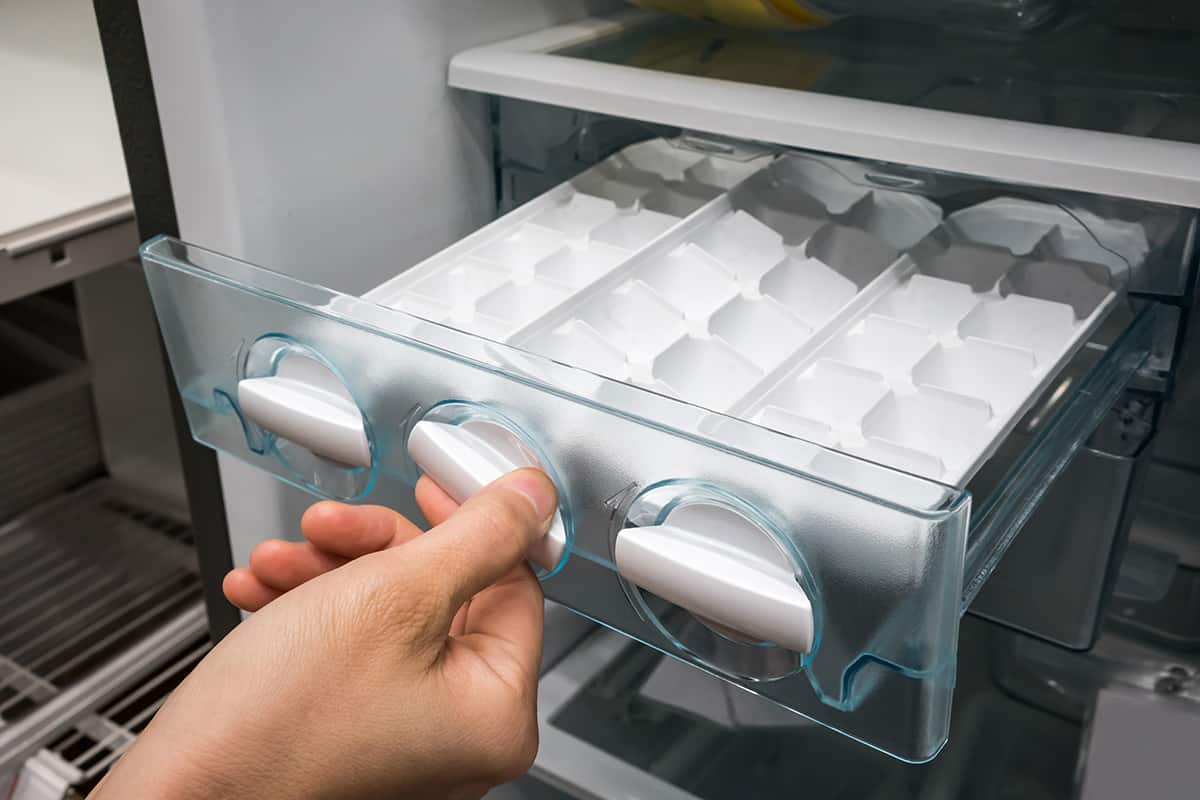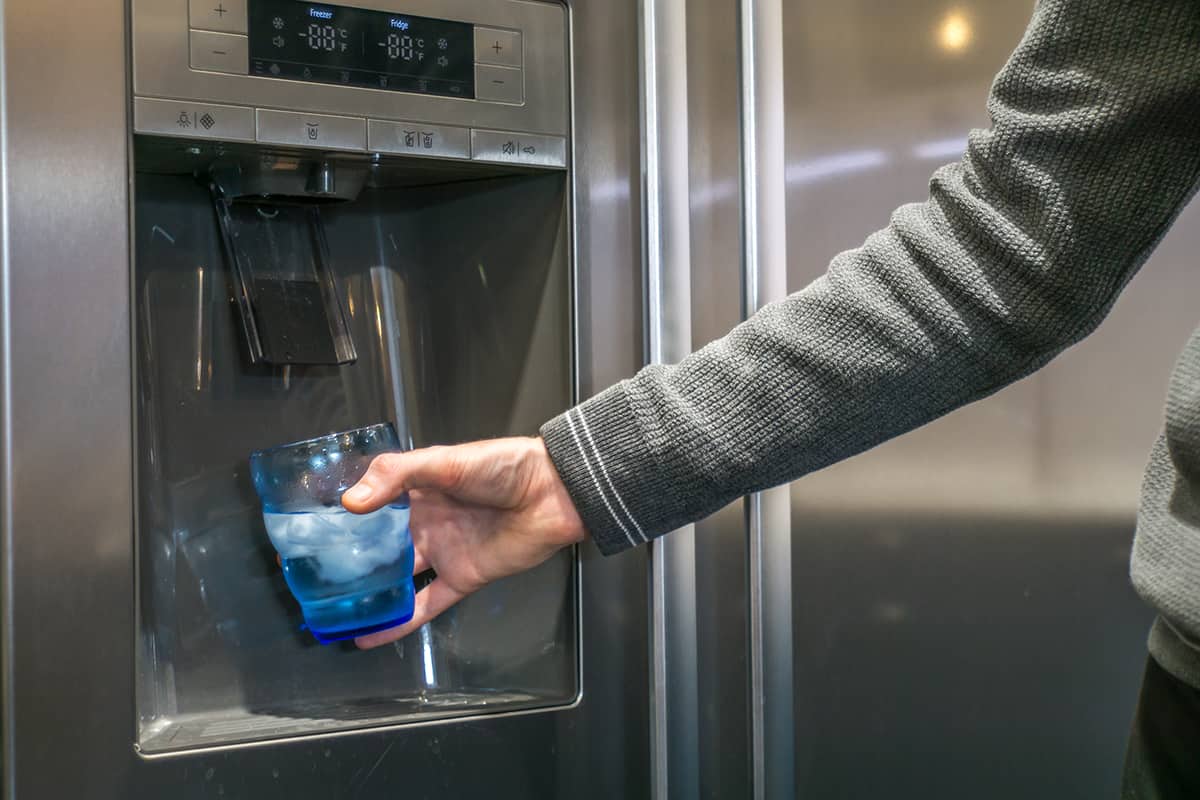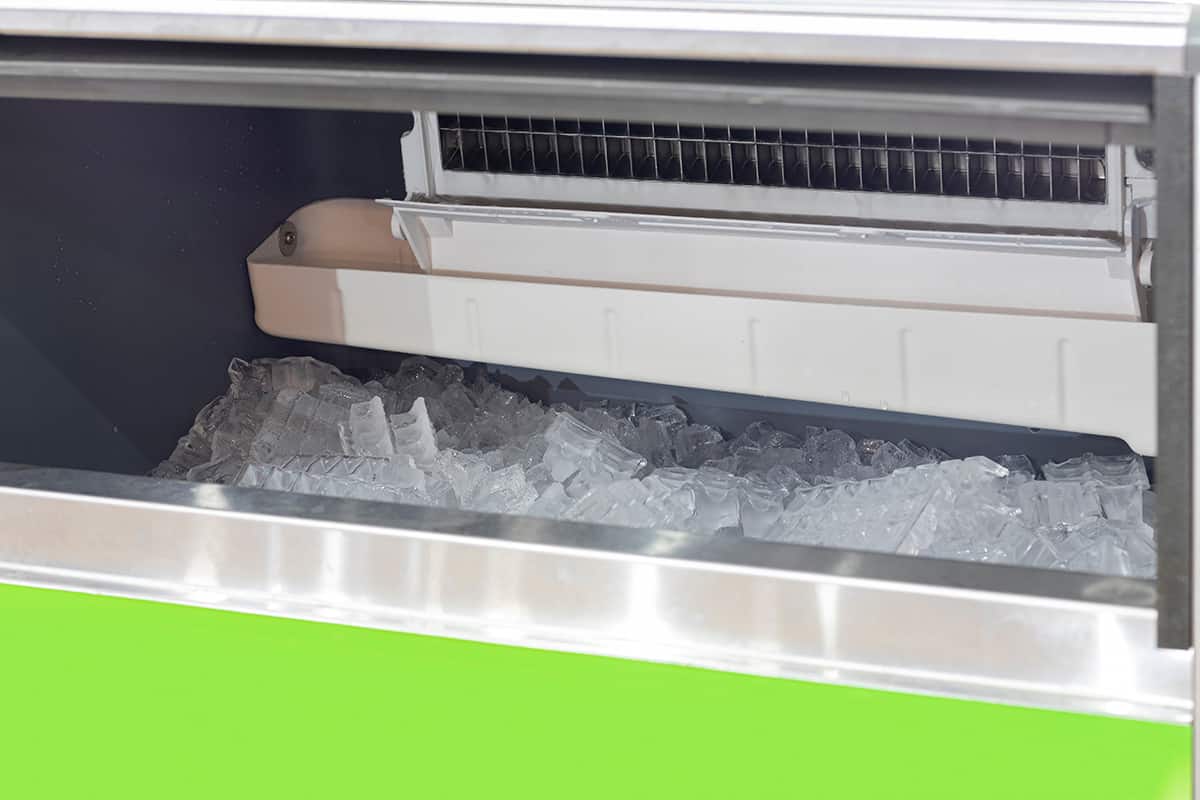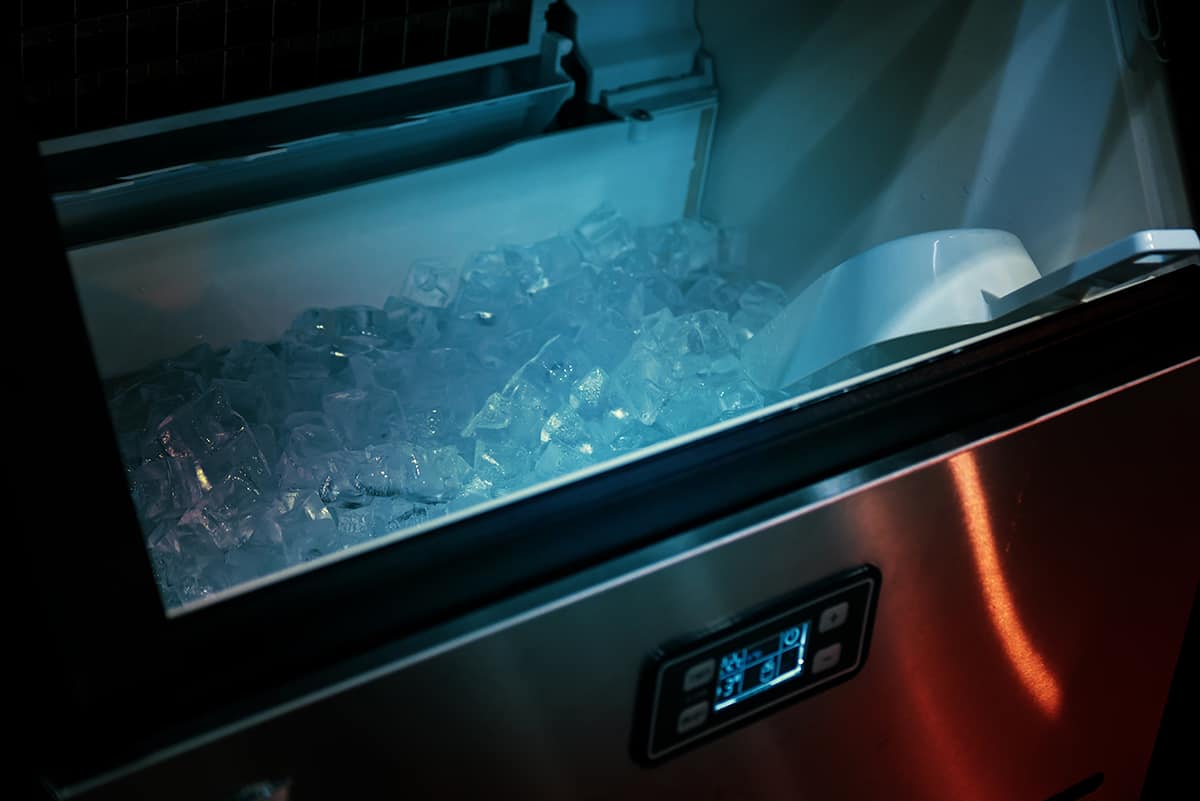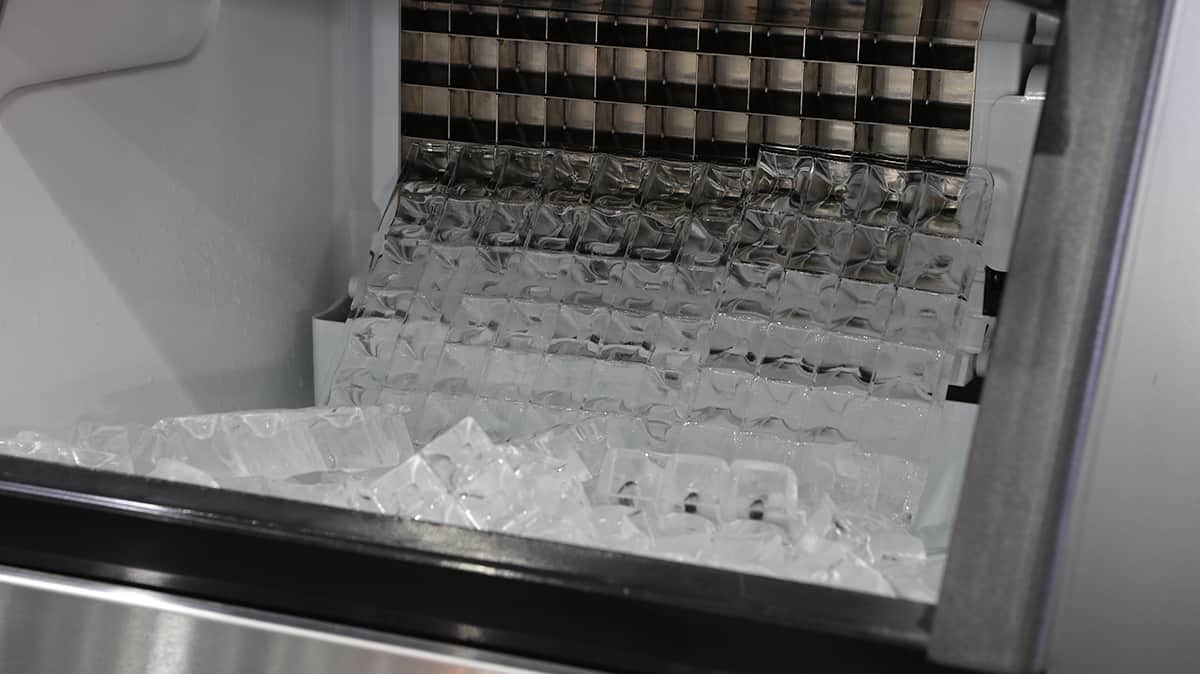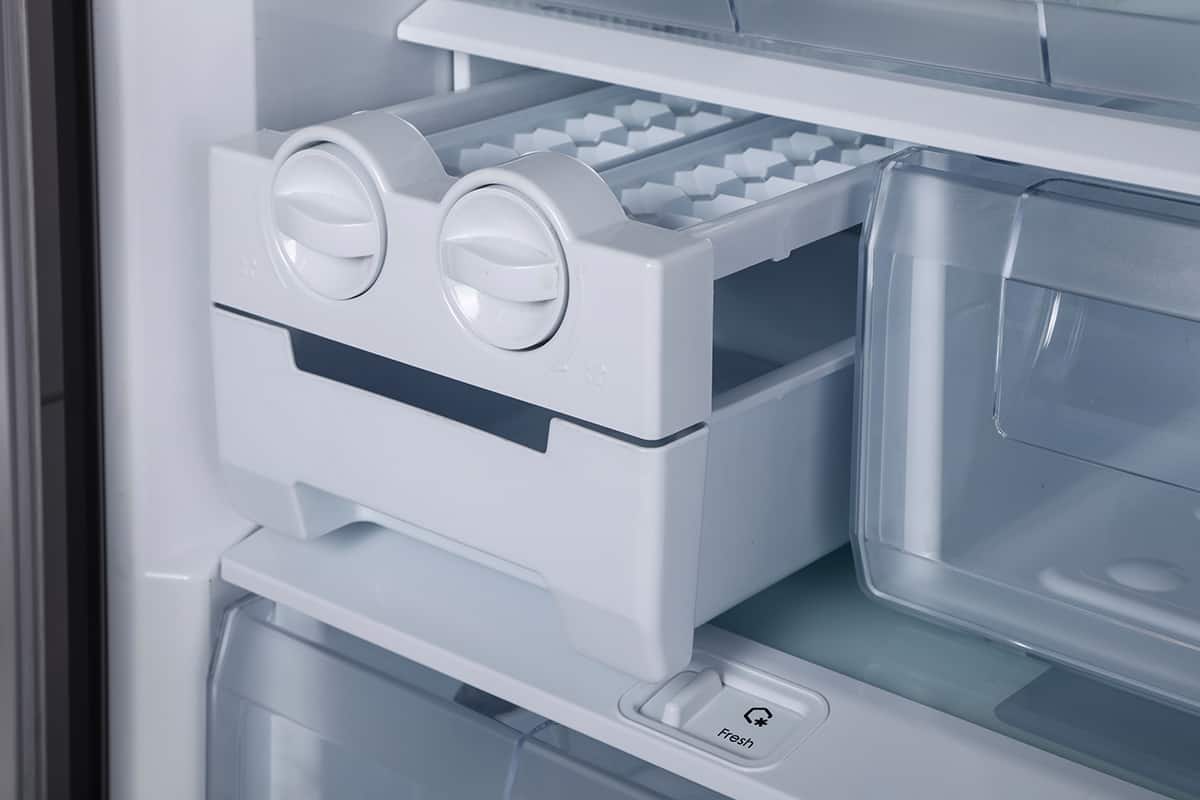If there’s one feature everyone wants for their refrigerator-freezer unit, it’s an ice maker. Many of Whirlpool’s recent fridge units come with an ice maker so that you can have plenty of ice on demand. However, as great as it is, the ice maker is prone to fail occasionally. Resetting the ice maker should get it to work again.
To reset a Whirlpool ice maker, turn the unit off by flipping the switch. Then, using a narrow object, push the reset button for 5 seconds, wait for the feeler arm to come down and up again, then the ice tray will flip over. After that, the ice maker should be ready to make a new batch of ice cubes.
In this guide, I’ll explain in what situations you should reset the ice maker, how to do it, and what you should do when resetting the ice maker doesn’t work.
How Does a Whirlpool Ice Maker Work?
Here’s a quick rundown of how an ice maker works:
- The feeler arm measures how much ice is in the ice bucket. If the arm is too low, the ice maker will begin making a new batch of ice cubes.
- A water pump will draw water from the connected water line, pass the water through a filter, and pour the water into the chilled ice tray.
- After 90 to 120 minutes, the ice tray will flip over and drop its contents into the awaiting ice bucket.
Why Should You Reset the Ice Maker?

Whirlpool is one of those household appliance brands you can trust. It’s known for manufacturing top-quality products, including washers and refrigerators with built-in ice makers, that require very little maintenance over their incredibly long lifespans.
However, there may come a time when the ice maker doesn’t work 100% as it’s supposed to. Luckily, resetting the device should bring it back to working order. That said, what sort of situations will call for resetting your ice maker?
Not making enough ice
There are few things more annoying than digging in the ice bucket and not finding enough cubes to cool down your drink. This is a symptom of a wide range of problems, including a faulty water line or broken cooling unit. Before breaking open your fridge to examine the problem further, try resetting the ice maker.
Not making ice at all
This is one of those things that is more annoying than not finding enough cubes in the ice bucket. If your ice maker doesn’t make ice at all, then you’re probably dealing with a faulty water line or a blockage somewhere in the ice maker. Resetting the ice maker can help, but in such a case, defrosting the ice maker may be more effective.
Feeler arm is out of position
The ice maker will know when to make ice and when to stop making ice, depending on the position of the feeler arm. When the feeler arm goes down, it implies that the ice bucket is running empty and needs to be replenished. Conversely, if the arm is up, then the bucket is full. However, if the arm is out of position—e.g., it’s too high when there’s not enough ice—then you may need to restart the entire ice maker.
Regular maintenance
If your ice maker is working perfectly, then there’s probably no reason to reset it. However, it’s good practice to reset your ice maker once every 6 to 9 months to ensure that the device is working as it’s supposed to. Resetting the ice maker will remove the leftover charge from plugging the unit in, which can interfere with the unit’s freezing efficiency.
How to Reset a Whirlpool Ice Maker
Now that we know why you should reset your Whirlpool ice maker, let’s learn how to do it.
Before we get started, make sure you have a sharpened pencil or pen cap and a few paper towels on hand. Now, let’s get started.
- Open the freezer door.
- Place the paper towels underneath the ice bucket.
- Hit the power switch on the ice maker to turn it off.
- Wait for 5 to 10 seconds and turn the power switch back on.
- Use a pencil or pen cap to push and hold the reset button for 5 seconds. The reset button should be on the underside of the ice maker unit.
- Wait for 10 to 30 seconds for the feeler arm to go down and return to its previous position.
- Wait for 10 to 30 seconds for the ice cube tray to flip over and remove any semi-frozen ice cubes.
- At this point, you should hear water flowing through the water line and filling the ice cube tray.
- Shut the freezer door and wait until the ice cubes have frozen.
What Should You Do If Resetting the Ice Maker Doesn’t Work?
Again, resetting an ice maker isn’t a blanket solution for all ice-maker-related problems. There are several other issues that may arise that may require further inspection or possibly replacement components.
Let’s look at some of the most common ice maker problems and what you can do to resolve them.
Buildup of ice
The way an ice maker works is a water pump will draw water and pour it into the ice cube tray. However, if the water line is positioned too low, the water may splash the inner walls of the ice maker. Over time, the droplets will become massive chunks of ice that prevent more water from flowing into the ice tray.
To resolve this problem, you will have to defrost the ice maker. Allow the ice chunks to thaw completely before turning the unit back on. Some ice makers come with built-in defrosting processes, while others may require turning the freezer off for 6 to 12 hours.
After defrosting the freezer, try repositioning the water line so that it’s closer to the ice tray. Alternatively, you can increase the temperature in your freezer to prevent the water droplets from freezing upon contact with the ice maker’s inner walls right away.
Clogged filter
Ice makers come with filters that capture solid debris from contaminating your ice cubes. Over time, the filter may become clogged and prevent water from flowing freely through the water line and into the ice tray.
It’s recommended that you replace the filter once every 6 to 9 months or whenever you periodically reset your ice maker. That way, you ensure that tiny particles don’t get in your ice and that there are no obstructions in the water line.
Damaged water line
The water line is the hose or pipe system in which water flows. It connects to your home’s water line to receive water on demand. If you moved homes recently or constantly reposition your fridge, the water line may become damaged. One clear sign that the water line is damaged is that it will leak water, or the ice maker will constantly become jammed even after defrosting it.
Remove the water line and inspect it for cracks or tears. If you find damage on the surface of the water line, you will have to replace it completely.
Faulty feeler arm
The feeler arm is responsible for when your ice maker prepares a new batch of ice. When the arm falls too low into the ice bucket, the bucket is running low on ice. If the arm is too high, the bucket is filled to the brim with ice.
The arm may become frozen in place on the “high” position. This can happen when you don’t use up the ice cubes in the bucket. So, moisten a paper towel with warm water and wrap it around the freezer arm. Wait for 30 seconds for the water to melt the ice holding the arm in place. Now, try moving the arm around.
In more extreme cases, the spring that keeps the arm in place may have popped out of place. You can tell whether this is the case when the arm can wobble up and down without resistance. To fix this problem, slowly move the arm up and down until the spring finally locks into place. If that doesn’t work, try disassembling the ice maker unit and manually putting the spring in its proper position.
Ice tray does not eject ice
When the water in the ice tray is frozen, a motor should flip the tray over to dispense the frozen cubes. It will then return to its original position and await more water to freeze into cubes. However, if you notice the cubes don’t fall out of the tray when it’s flipped over, then there might be a problem with the ice maker’s motor assembly.
You might be able to solve this problem by shutting off the ice maker, manually removing the ice from the tray, and inspecting the tray for ice clumps. Residual ice in the tray may keep ice cubes from falling out of the tray when it flips over.
If that doesn’t work, then your only hope is to replace the ice maker’s motor assembly. Before shopping for a new motor assembly, I suggest hiring a professional technician and asking for a second opinion.
